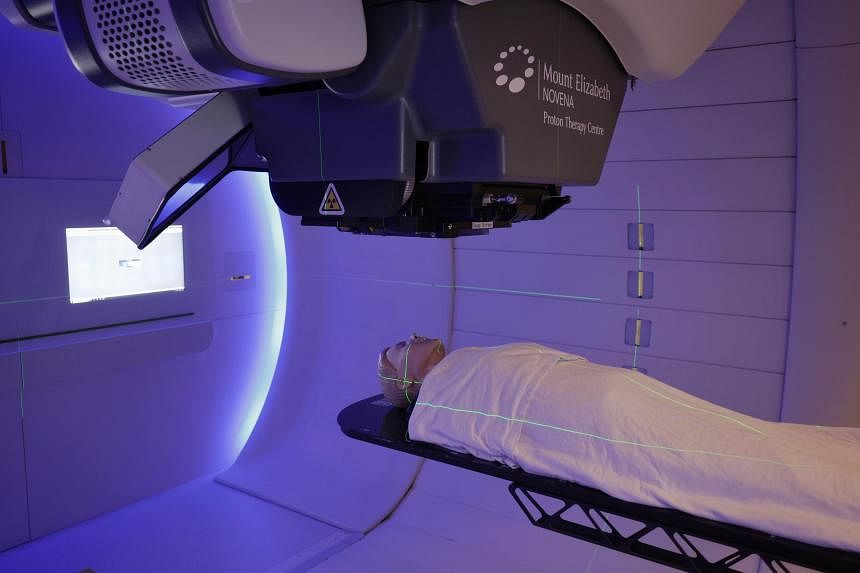SINGAPORE – Fewer foreign patients are flocking to Singapore than before as costs here rise and competition intensifies in the region, and there is a need for providers to pivot to offering more critical and complex care, healthcare experts said.
For decades, foreign patients from Indonesia, Sri Lanka, Vietnam and elsewhere have been coming to Singapore for a wide range of medical care, from health screenings to scopes to surgical procedures in various specialities, including heart bypass surgery and organ transplant.
However, the competition that Singapore faces from players in the region, particularly Malaysia and Thailand, has grown significantly over the years, as healthcare providers in these neighbouring countries can carry out standard procedures for a much lower fee than what is charged here, experts said.
IHH Healthcare Singapore, the largest private healthcare provider here, said foreign patients made up about 15 per cent of its total patient base at the end of 2023, down from 20 per cent in 2019, said Mr Jeffrey Law, its chief commercial officer.
The foreign patients that it has lost are mostly those who come for health screenings and scopes, he added.
Those who are sick continue to come here for treatment, and their problems are more complex after the Covid-19 pandemic. They are thus staying longer and chalking up bigger bills as a result, he said.
Mr Law said the average length of stay of a foreign patient has gone up to four to five days, from three to four days before the pandemic.
High cost and capacity explain the drop in foreign patient numbers, said Dr Wong Seng Weng, medical director of The Cancer Centre and executive director of the Singapore Medical Group (SMG).
He believes almost all private healthcare providers, on aggregate across multiple medical disciplines, would have experienced a drop and SMG is no exception.
Cost-wise, the high inflation rate in the Singapore healthcare sector might have priced its services beyond the reach of many patients in the region, he said. Furthermore, air travel costs have also gone up.
“Healthcare providers in Singapore do need to moderate the increase in cost,” he said.
“Healthcare services capacity in Singapore is still severely constrained by manpower shortage. This has led to longer wait times and the healthcare system having less flexibility to accommodate the on-demand requests of foreign patients.
“This also affects the overall experience foreign patients have of our system when utilising healthcare services in Singapore.”
At Raffles Medical Group, which runs Raffles Hospital, its executive chairman, Dr Loo Choon Yong, had said at a results briefing at the end of February that a challenge it now faces is the loss of foreign patients. This is due to higher healthcare costs, inflation and the strong Singapore dollar against regional currencies. The group is instead expanding in the region.
“With rising affluence across the region, higher expectations and easier access, medical travel continues to expand. Malaysia, in particular, has really blossomed and has joined Singapore and Thailand as leading providers in the region,” said public health specialist Jeremy Lim.
Indonesia, which has been a major source of foreign patients for Singapore, is also aiming to retain them with the opening of the Bali International Hospital in 2024, and others in the future. The Indonesian authorities have said the target segment for the Bali hospital is Indonesian citizens who seek medical treatment abroad.
“Singapore is facing significant challenges from Malaysia and Thailand, and given higher prices here, it will need to focus on higher-complexity cases, higher-net-worth patients, as well as address our cost base,” said Dr Lim, an associate professor at the National University of Singapore’s Saw Swee Hock School of Public Health.
In fact, IHH – which runs two Mount Elizabeth hospitals, Gleneagles Hospital and Parkway East Hospital – said its foreign patients are shifting from seeking elective single speciality care, including scopes, to more critical and complex multi-speciality care that may not be available in their home countries.
IHH’s Mr Law said the group has been building on its position as a regional centre of excellence for high-acuity care, offering cancer treatments such as CAR (chimeric antigen receptor) T-cell therapy, complex surgery, and transplantation of stem cells, faecal microbiota, livers and kidneys.
At the same time, it is pioneering new treatments and drugs, and investing in building stronger capabilities in emerging areas like precision medicine, for instance.
Proton therapy, a newer mode of radiation treatment that delivers less radiation than conventional radiotherapy and is costlier, has been drawing foreign patients here. Three players here have been offering it since 2023: IHH; the Singapore Institute of Advanced Medicine Holdings (SAM), a new cancer centre in Biopolis Drive; and the National Cancer Centre Singapore.
Foreign patients now account for about half of the patients undergoing proton treatment at IHH, and for some 40 per cent of the total patient volume for proton therapy at SAM.
SAM’s spokesman said its foreign patients come mostly from Indonesia, Australia, Malaysia, Vietnam and India to get treatment for typically brain, head and neck, liver, cranio-spinal and prostate cancers. On average, they get 30 to 35 daily treatments, and they stay in Singapore for 1½ to two months.
Both IHH and SAM said they expect their foreign patient numbers to grow further, given their high-end services, which may not be available elsewhere in the region, their expertise, and Singapore’s reputation as a trusted and mature healthcare hub in the region. However, the numbers are unlikely to return to pre-pandemic levels, said Mr Law.
Thailand also offers proton therapy, but reportedly restricts it to Thai nationals.
The recovery of foreign patient numbers is fairly important to the private medical oncology sector in Singapore as it compensates for the disappearance of some local patients since the Cancer Drug List became effective for people with Integrated Shield Plans (IPs) in 2024, said The Cancer Centre’s Dr Wong.
More than 90 per cent of cancer drug treatments used here are on the list. Cancer treatments not on the list do not receive government subsidy, nor can claims be paid for using MediSave funds. They are also not covered by MediShield Life or IP health insurance.
Local patients with private MediShield plans without an additional rider are unlikely to be able to pay for quite a large number of treatment options in the private setting as the reimbursement without a rider is inadequate to cover even the basic cost price of drugs purchased from pharmaceutical companies, Dr Wong said.
This is because the benefits of price reduction of drug acquisition since the implementation of the CDL were not shared with the private sector, he added.
“Even patients with MediShield riders are being persuaded to go to the public sector as they are threatened with a higher quantum of premium jack-up by the insurers for subsequent years should they seek private healthcare,” Dr Wong said.
While the private players continue to draw foreign patients, Singapore no longer pursues medical tourism as a travel strategy.
Dr Lim said it is clear that the public healthcare sector must concentrate on locals, and foreign patient numbers treated in public sector facilities should be actively tracked to assure Singaporeans and residents of that commitment.
Medical travel creates good jobs and high-quality revenue for Singapore, but if taken to excess, it risks crowding out Singapore residents and further straining the health system, Dr Lim said.
Hence, there is a need to strike the right balance.
Private providers have the leeway to pursue whatever is most economically rational for themselves, and because they pay taxes and create jobs, they should be supported, Dr Lim said.
For instance, policy restraints could include the imposition of requirements to treat a certain percentage of local patients, as with the proposed not-for-profit private hospital, he added.
These measures have to be taken in the context of the overriding policy objective to ensure that Singapore residents have reasonable access to high-quality, affordable healthcare, he said.


